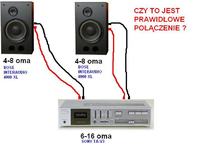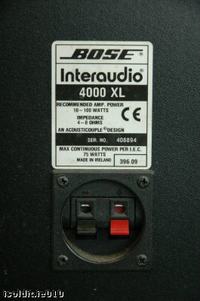Kur-Czak wrote: The nominal impedance of the loudspeakers is given for f = 1 kHz and, as my colleague wrote, it changes with the frequency.
When it comes to the loudspeaker's nominal impedance, my colleague is not true. I refer to literature.
ferdek3033 wrote: Hello, as in the subject. What's with the speaker impedance from 4 to 8 ohms. I have an amplifier for which I would need 4 ohms speakers to get more out of it and I do not know if I buy such speakers, whether they will work at 4 or 8 ohms. Please help.
When designing the amplifier, the designer assumes its operation with typical loudspeakers with specific nominal impedances. In this case, 4 ? or 8 ?.
4? is the minimum nominal impedance of the connected loudspeakers. The amplifier can work with 8? speakers without any harm. Of course, it can also work with loudspeakers of even higher impedance, but such speakers are rarely found in the trade.
The description on the amplifier indicates which speakers you can use with this amplifier. If you wanted to use a set of loudspeakers with a resultant nominal impedance, e.g. 2? for one channel, you could damage the amplifier.
If you want to get more power from this amplifier, connect the 4? speakers, if you want to provide the amplifier with more comfortable working conditions (lower heat generation), connect the 8? speakers. The difference in volume will be very small as long as both types of speakers have the same efficiency.




